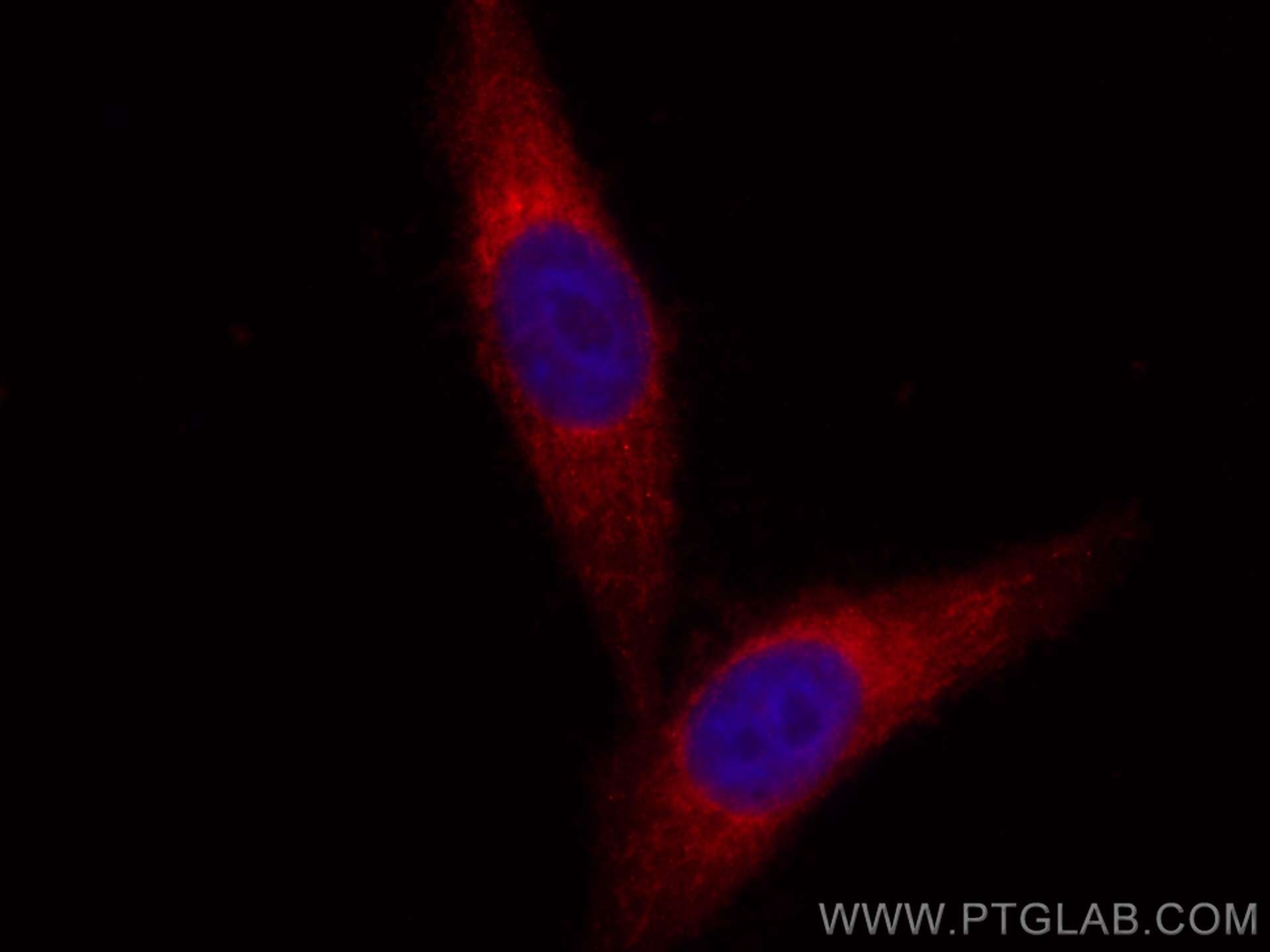- Featured Product
- KD/KO Validated
CoraLite®594-conjugated PLOD3 Polyclonal antibody
PLOD3 Polyclonal Antibody for IF/ICC
Host / Isotype
Rabbit / IgG
Reactivity
human, mouse, rat
Applications
IF/ICC
Conjugate
CoraLite®594 Fluorescent Dye
Cat no : CL594-11027
Synonyms
Validation Data Gallery
Tested Applications
| Positive IF/ICC detected in | HepG2 cells |
Recommended dilution
| Application | Dilution |
|---|---|
| Immunofluorescence (IF)/ICC | IF/ICC : 1:50-1:500 |
| It is recommended that this reagent should be titrated in each testing system to obtain optimal results. | |
| Sample-dependent, Check data in validation data gallery. | |
Product Information
CL594-11027 targets PLOD3 in IF/ICC applications and shows reactivity with human, mouse, rat samples.
| Tested Reactivity | human, mouse, rat |
| Host / Isotype | Rabbit / IgG |
| Class | Polyclonal |
| Type | Antibody |
| Immunogen | PLOD3 fusion protein Ag1480 相同性解析による交差性が予測される生物種 |
| Full Name | procollagen-lysine, 2-oxoglutarate 5-dioxygenase 3 |
| Calculated molecular weight | 738 aa, 85 kDa |
| Observed molecular weight | 80-85 kDa |
| GenBank accession number | BC011674 |
| Gene symbol | PLOD3 |
| Gene ID (NCBI) | 8985 |
| RRID | AB_2919757 |
| Conjugate | CoraLite®594 Fluorescent Dye |
| Excitation/Emission maxima wavelengths | 588 nm / 604 nm |
| Form | Liquid |
| Purification Method | Antigen affinity purification |
| Storage Buffer | PBS with 50% Glycerol, 0.05% Proclin300, 0.5% BSA, pH 7.3. |
| Storage Conditions | Store at -20°C. Avoid exposure to light. Stable for one year after shipment. Aliquoting is unnecessary for -20oC storage. |
Background Information
PLOD3, also named as LH3, forms hydroxylysine residues in -Xaa-Lys-Gly- sequences in collagens. These hydroxylysines serve as sites of attachment for carbohydrate units and are essential for the stability of the intermolecular collagen cross-links. The major function of PLOD3 in osteoblasts is to glucosylate galactosylhydroxylysine residues in type I collagen.
Protocols
| Product Specific Protocols | |
|---|---|
| IF protocol for CL594 PLOD3 antibody CL594-11027 | Download protocol |
| Standard Protocols | |
|---|---|
| Click here to view our Standard Protocols |


